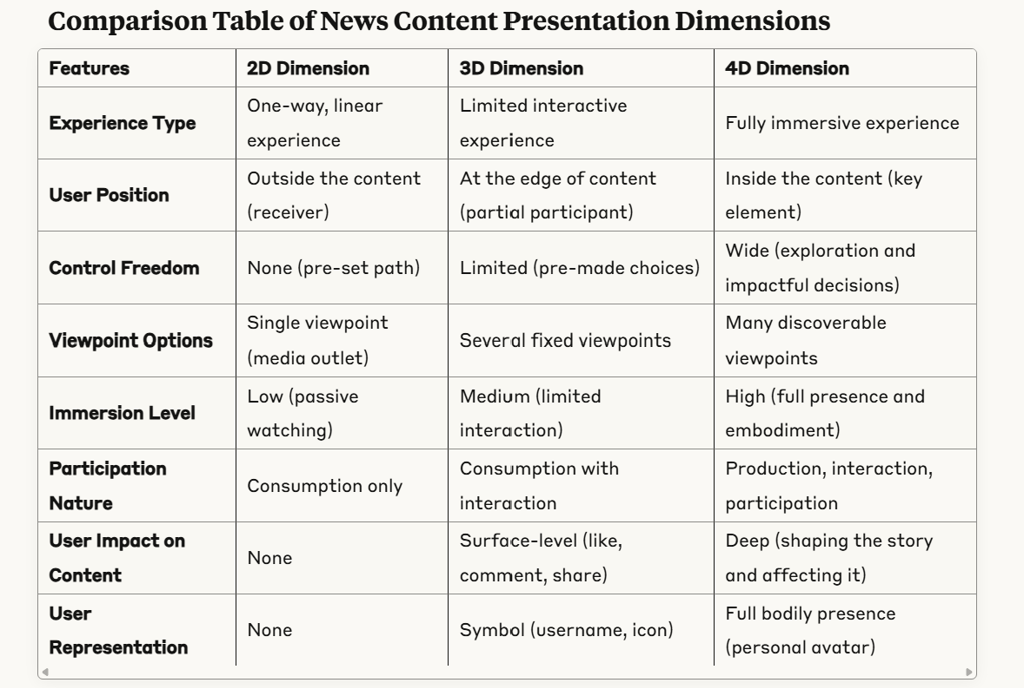Comparing News Presentation Dimensions: From 2D to 4D
WINTER QUARTER 2025




Evolution of News Presentation Dimensions:
2D Dimension: World of Passive Viewing
Technical Features: Fixed media (newspapers, books) or linearly moving (radio, TV)
User Relationship: One-way relationship (sender → receiver)
Current Examples: Traditional TV news, newspaper articles, radio programs
Experience Limits: User must follow the form, order, and content set by the media outlet
Main Problems: Limited immersion, weak deep understanding, low presence levels
3D Dimension: World of Limited Interaction
Technical Features: Interactive digital platforms, touch interfaces, interactive moving elements
User Relationship: Limited two-way relationship (interaction within set boundaries)
Current Examples: Interactive news websites, news apps, social media platforms, interactive displays
Interaction Space: User interacts with content without being part of it (comments, shares, chooses)
Benefits: Better engagement level, partial understanding improvement, some customization options
4D Dimension: World of Immersion and Embodiment
Technical Features: Complete virtual simulation, digital user embodiment, responsive dynamic environment
User Relationship: Integrative relationship (user is part of the news system)
Proposed Experience:
User actually enters the news world as an active participant
Ability to move freely and change viewing angles
Direct interaction with news story elements (presenter, witnesses, experts, locations)
Possibility to make decisions that affect the news experience path
Unique Benefits:
Enhancing all six presence levels (spatial, temporal, emotional, cognitive, social, self)
Transforming knowledge from abstract to tangible through direct experience
Enabling multi-dimensional understanding of complex issues through multiple perspectives and experiences
Improving memory and deep comprehension through sensory and emotional immersion
Expected Effects of 4D Dimension on the News Landscape:
Shift from Transmission to Participation: User moves from information receiver to experience participant
Enhanced Deep Understanding: Better understanding of complex issues through direct experience
Experience-Based Learning: Gaining knowledge through direct interaction instead of passive reception
Increased Empathy and Awareness: Deeper understanding of others' experiences through simulation
New Levels of Transparency: Users can explore different aspects of the news story
News Industry Transformation: Lower field coverage costs and better journalist safety
Redefined Audience-Content Relationship: Audience shifts from consumers to active participants
Future Challenges and Opportunities:
Challenges:
Developing fast production systems that keep up with the immediate nature of news
Ensuring accuracy and objectivity while allowing flexibility and interaction
Developing new skills for journalists and media organizations
Addressing ethical issues related to simulating sensitive events
Opportunities:
Creating a new journalism model combining the depth of investigative journalism with game participation
Developing an advanced educational platform for complex issues
Opening new markets for media organizations and diversifying income sources
Enhancing civic participation through deeper understanding of public issues